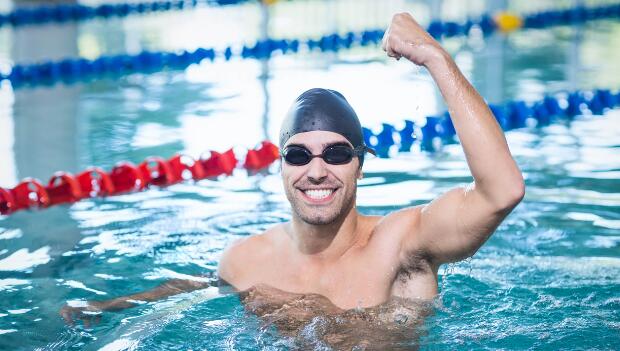
You're a triathlete—?t, strong and lean. You've been swimming three to five times a week, racking up the yards. You're getting fitter and faster and you're psyched. Then one day you have a scheduling conflict and drop in on the evening Masters swim with the age group kids next to you only to find out you're getting smoked by 12-year-olds. How can that be?
Well, that kid probably started swimming when she was six and has been training nine to 11 months a year for half of her life to the tune of 4-8K per workout. You've been swimming for one to three years, logging maybe 10K a week.
Your problem is simple: you've been training your swim like a triathlete, concerned with intensity and volume. Instead, you need to train like a six-year-old, learning the basics of proper technique.
Here are seven swimming technique keys to help you take your swim to the next level. We can't promise you'll ever catch that kid in the water, but at least you'll be on the fast track to getting better.
Swimming Technique Keys
1. Horizontal Body Position
We swim by slipping our body through the water. Reducing frontal area and drag are critical to faster swimming. A horizontal body position, with your body moving smoothly across the top of the water, is effectively swimming through a relatively narrow tube. The tube is the same diameter from your head to your feet. If you have poor horizontal body position, if you drag your hips, legs and feet, the diameter of this body tube becomes much bigger and creates more drag. This requirement for horizontal body position is absolutely fundamental to effective swimming and is a "Do-Not-Pass-Go" issue.
2. Lungs as Fulcrum
We have several balancing tools to help us achieve a horizontal body position: arms, head, lungs and an effective kick. Everything happens around the fulcrum of your lungs. Imagine your body is a teeter-totter, with your lungs as the fulcrum or balancing point. The more "stuff" you can put in the front of your lungs the more you're able to counterbalance your heavy legs. So rather than trying to kick or force your legs up to the surface, use buoyancy and leverage to simply ?oat them to the surface. This is free speed with virtually no energy cost.
3. Front Quadrant Swimming
You want to keep your arms in front of your fulcrum as much as possible, to act as a counter balance to your legs. This style of swimming is called front quadrant swimming. In addition, the longer you keep your arms extended in front of you, the longer you maintain a long body axis. Think of a long, sleek sailboat versus a squat dingy. A long, streamlined body is more hydrodynamic, and therefore slips through the water more readily.
4. Body Rotation Along the Body Axis
You are swimming front quadrant, using your arms as balancing tools and maintaining a long, streamlined body axis. You now rotate your body along this body axis. This rotation is rotary power that originates in your core. In addition, when you rotate your body along this axis to set up the pull, you do two things:
- First, since you're turned over on your side, presenting less frontal area to the water, you are more hydrodynamic.
- Second, you've positioned the large muscles of your lats and chest to participate in the pull, not the weaker stabilizer muscles of your shoulder joint.
If you are swimming "?at", with very little body rotation, you're presenting lots of frontal area to the water. You're also pulling with the small muscles of the shoulders and delts. Not only are these muscles small and weak, they're also not made to pull. They are designed to stabilize the shoulder. By relying in these muscles to pull and provide power to your stroke you are increasing your risk of injury.



